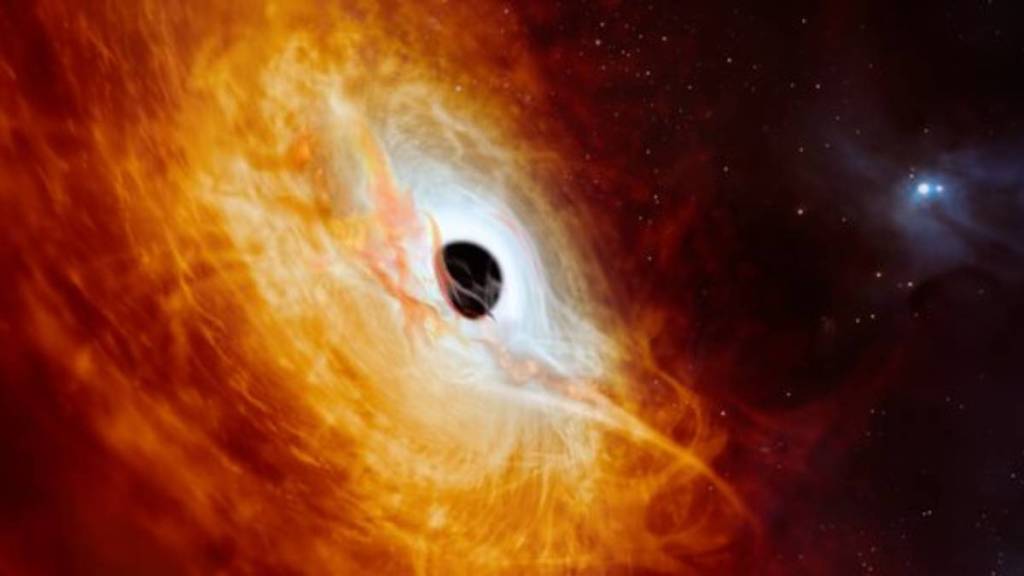The European Southern Observatory (ESO) recently unveiled a groundbreaking discovery: an incredibly bright quasar, distinguished as not only the brightest of its kind but also the most luminous entity ever detected in space. Nestled within this extraordinary celestial body lies a black hole that devours the mass equivalent of our Sun daily.
Quasars are the intensely active and radiant cores found in some remote galaxies, fueled by supermassive black holes. These cosmic giants expand by absorbing matter drawn in by their immensely powerful gravitational pull. The black hole residing at the heart of the newly identified quasar, named J0529-4351, is the fastest-growing one known to humanity. Situated at a distance so immense that its light took over 12 billion years to reach us, this quasar showcases unparalleled luminosity.
Christian Wolf, lead author of a study published in Nature Astronomy, expressed, “We have discovered the fastest-growing black hole known to date. It has a mass of 17 billion Suns, and eats just over a Sun per day. This makes it the most luminous object in the known Universe.”
Although black holes themselves do not emit light or energy, the matter they ingest does. The material being drawn into this exceptionally radiant quasar emits an astounding amount of energy, surpassing the Sun’s luminosity by over 500 trillion times. Astonishingly, despite its immense brightness, energy, and massiveness, this quasar remained undetected until now, described by researchers as “hiding in plain sight.”
Christopher Onken, co-author of the study, remarked, “It is a surprise that it has remained unknown until today when we already know about a million less impressive quasars. It has literally been staring us in the face until now.” Intriguingly, J0529-4351 appears in images captured by the ESO Schmidt Southern Sky Survey dating back to 1980, yet its identity as a quasar went unrecognized until much later.


